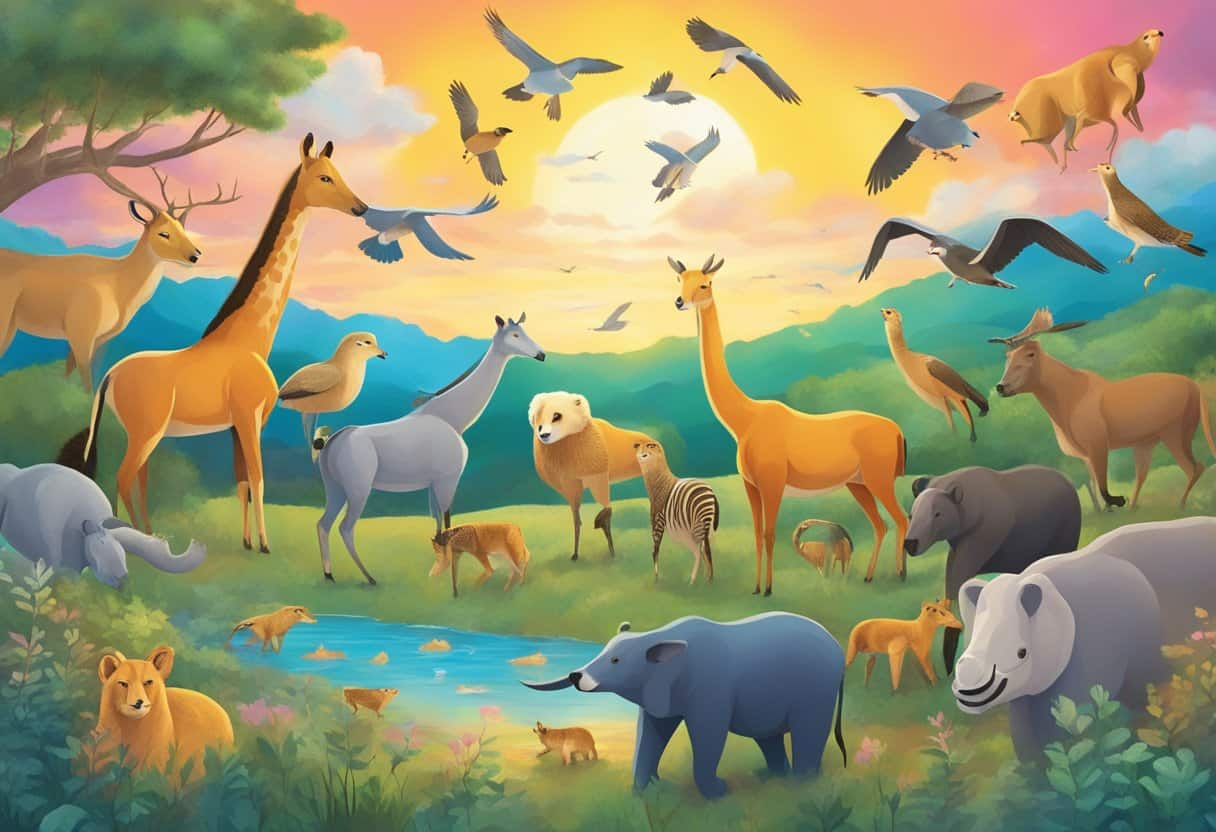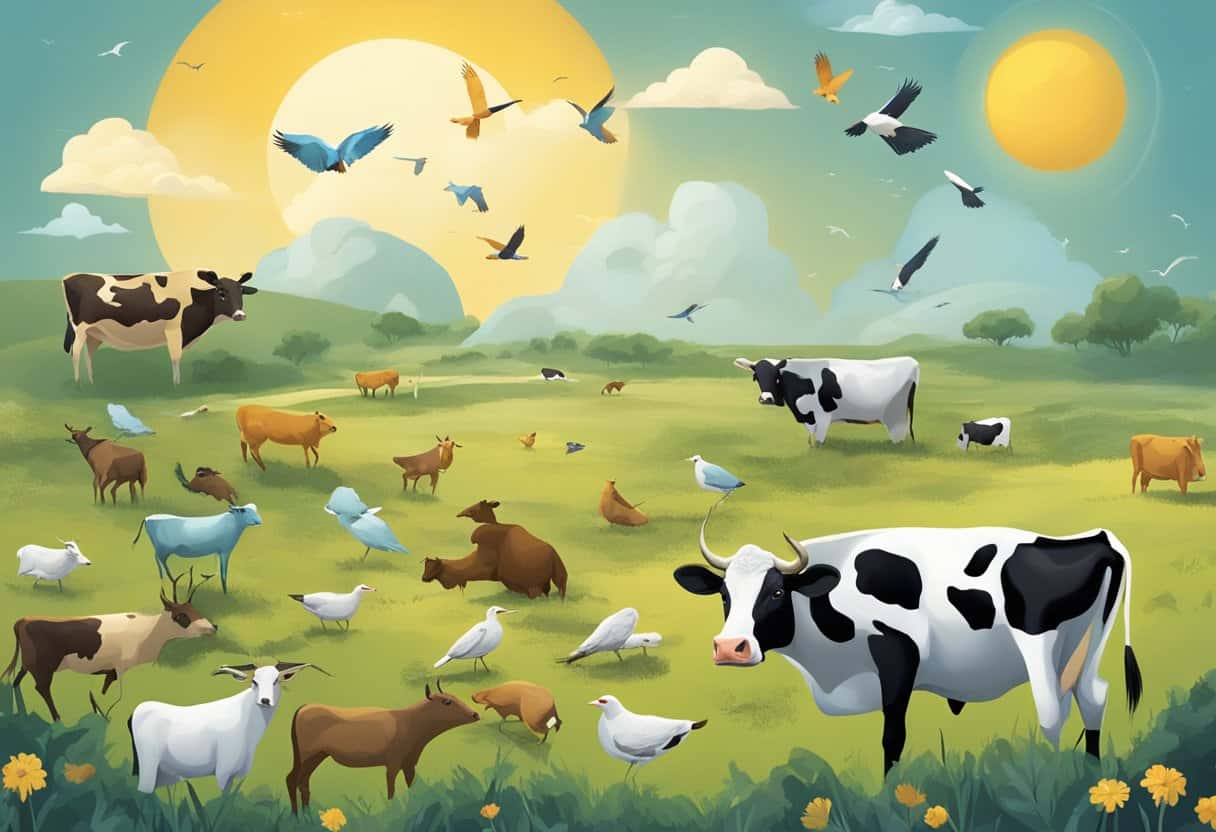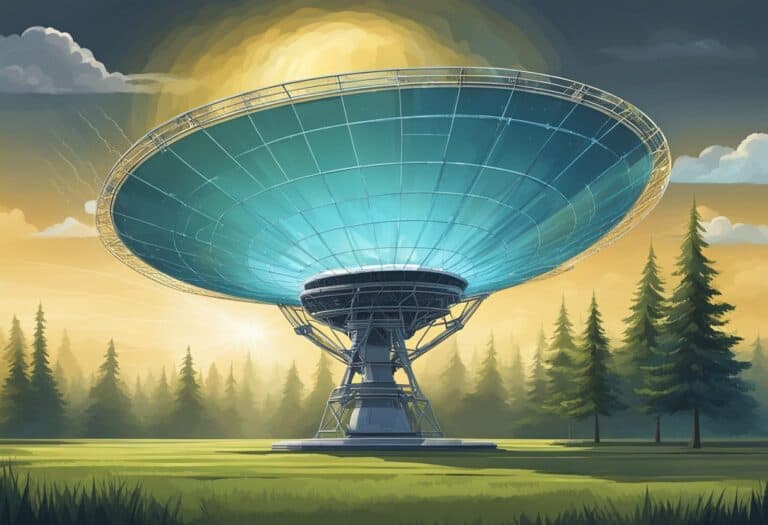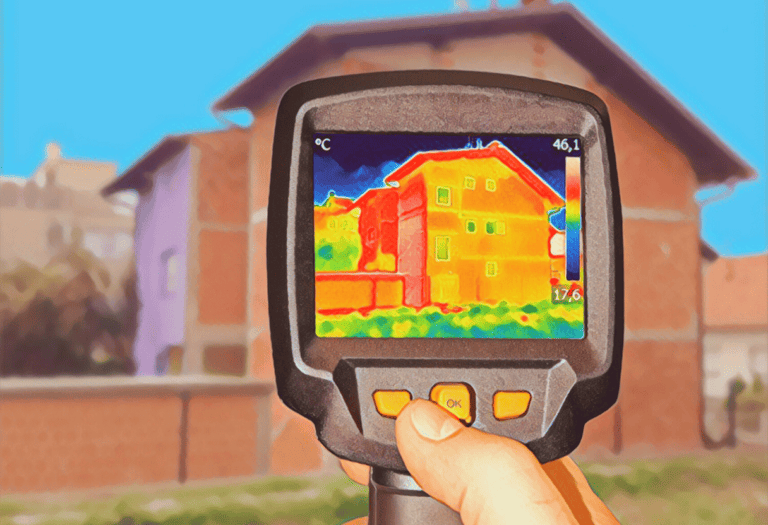The concept of animals predicting weather has fascinated humans for centuries. You might have heard anecdotes or observed instances where animal behavior seems to indicate an impending weather change.
From dogs seeming restless before a storm to birds flying low when rain approaches, these species-specific behaviors are not just old wives’ tales but have a basis in scientific observation. Some animals are indeed capable of sensing weather conditions before they become apparent to humans, and their reactions can serve as valuable indicators for upcoming weather events.
Animals have adapted to their environments in ways that sometimes allow them to detect subtle changes in atmospheric pressure, humidity, and wind patterns. This sensitivity can lead them to behave in unique ways prior to changes in the weather. For example, a study focused on the effects of weather and climate on animal populations suggests that environmental variables can significantly impact animal behaviors, which can sometimes be observed as predictive signs.
By closely observing these behaviors, you can gain insights into how animals can act as bioindicators for weather predictions.
Animals can predict weather changes by sensing atmospheric conditions. Behaviors like birds flying low before rain and frogs croaking more when humidity rises serve as bioindicators. Scientific studies confirm animals detect subtle environmental shifts, aiding in weather forecasting.
Phenomena Prediction in the Animal Kingdom
In the animal kingdom, certain behaviors can serve as indicators of upcoming weather changes. From subtle shifts in barometric pressure to imminent natural disasters, animals have developed various mechanisms to predict and respond to the environment.
Early Warning Signs: From Storms to Earthquakes
Animals such as birds and sharks may exhibit unusual behaviors when a storm or natural disaster is approaching due to their sensitivity to changes in barometric pressure and infrasound. Birds may fly lower or seek refuge well before bad weather becomes apparent. Sharks can detect drops in water pressure, often diving into deeper waters before hurricanes or tsunamis strike.
Seasonal Shifts and Weather Changes
Groundhogs in America, particularly Punxsutawney Phil, are part of a legend that suggests their emergence from burrows can predict an early spring or extended winter weather. While this is a folkloric example, many animals, like birds and butterflies, exhibit migration patterns that signal seasonal shifts and can indicate the changing weather.
Interpreting Daily Weather Patterns
Cows and sheep may display altered behavior when they sense changes in air pressure. Prior to rainstorms, cows are often seen lying in pastures, potentially to preserve a dry spot, and sheep may huddle together to find shelter.
Aquatic and Amphibian Insights
Frogs, fish, and toads are well known for reacting to weather changes, particularly rain. Increased croaking may occur when frogs detect a rise in humidity and air pressure changes, and fish may swim to shallow depths before storms, possibly due to discomfort caused by changes in water pressure.
Bugs and Insects as Weather Indicators
Ants often build their mounds higher before rain, while bees may become more active before storms, possibly due to changes in air pressure. Woolly bear caterpillars’ banding patterns have been said to predict the harshness of winter, and crickets’ chirping rates can change with temperature; a well-known, though approximate, method suggests using cricket chirps to judge the air temperature.
Livestock and Farm Animal Behavior
Farmers frequently observe their animals for indications of weather changes. For instance, when sheep sense bad weather, they might seek shelter. Cows might appear more restless before a storm, and altered behavior in chickens, such as flocking together or seeking shelter, can indicate that they are sensing an oncoming storm.
Domestic Pets and Weather Sensitivity
Cats and dogs exhibit varying behaviors when a change in the weather is imminent. Dogs may eat grass or appear more restless, and cats may seek hiding places. Some pets might become more clingive, sensing their owners’ anxiety about the upcoming change in weather or responding to their own discomfort due to shifts in atmospheric pressure.
Scientific Explanations for Animal Weather Sensing
You’ve likely heard stories about how animals can predict the weather. This section will unpack the scientific explanations behind such abilities, investigating both the biological basis and observable behaviors through the lens of historical and modern studies.
Biological and Physiological Mechanisms
Animals may sense changes in barometric pressure and humidity, which often precede weather shifts. For example, some species detect impending bad weather through changes in air pressure, allowing them to respond before humans notice any difference. Scientific studies have identified infrasound – sound waves with frequencies below the range of human hearing – as another potential cue animals might use to predict storms or natural disasters.
Behavioral Observations and Studies
Over time, observation of animal behavior has led to weather predictions. Patterns such as birds flying lower or cattle grouping together have historically been used as nature-derived weather radar. Behavioral studies have formalized these observations, determining the reliability and specific conditions under which such animal behaviors can serve as weather predictors.
Critiques of Animal-Predicted Meteorology
Despite anecdotal evidence and some scientific analysis, scepticism remains regarding the accuracy of animal-based forecasts. Critics point out that while animals can detect certain environmental changes, humans with advanced technology might still outperform these nature-based methods, especially in a scientific study context.
Influence on Human Practices
The ability of animals to predict the weather has influenced human practices, especially among farmers. Practices have incorporated animals’ responses as warnings to secure crops and livestock ahead of bad weather. This intersection of natural disaster precautions and historical context remains a topic of keen interest and scientific study for observation and potential application.
Cultural and Folkloric Perspectives

Your curiosity about the natural world is often illuminated by the rich tapestry of folklore and cultural traditions. These stories and customs bring life to the idea that animals can predict the weather—a belief that has captivated humans for centuries.
Folklore and Myth Around Weather and Animals
The link between animals and weather prediction is deeply rooted in folklore across various cultures. For instance, woolly bear caterpillars have been thought to forecast the severity of winter weather in America with the width of their colored stripes. This belief hints at a broader cultural significance, a blend of nature observation and legend. In Greece and other cultures, animals were believed to possess an innate ability to sense changes in weather, a vital part of the agricultural and seasonal cycles critical to these societies.
Modern Interpretations and Celebrations
Modern-day America has seen these traditions evolve into annual celebrations such as Groundhog Day. Every February 2nd, you witness the legendary Punxsutawney Phil emerge from his burrow in Pennsylvania. The shadow he sees, or doesn’t see, is said to predict the coming of spring. These events capture not just a whimsical hope for an early end to winter but also highlight the enduring cultural significance rooted in such folklore. Across the nation, festivals and events pay homage to these animal weather predictors, showcasing a playful yet respectful nod to the wisdom of the past.
Analyzing Environmental Impact on Behavior
In this section, you’ll explore how changing environmental conditions affect animal behaviors, particularly those related to weather prediction. You’ll see how species have adapted to new patterns caused by climate changes and habitat alterations.
Effects of Climate Change on Animal Predictors
Climate change has a profound effect on the behaviors of wildlife, especially species known for their ability to predict weather changes. Migration patterns are shifting, with birds and butterflies departing earlier or arriving later than in decades past. For example, increases in temperature can influence seasonal behaviors and you might notice these changes in the timing of bird migrations due to altered food availability.
Adaptation to these fluctuations is crucial. Some species are managing to adjust their nesting periods, aligning them with the new seasons to ensure the availability of resources such as water and shelter. However, this isn’t universal, and often, habitat destruction exacerbates these challenges. Behavioral changes also reflect the need to seek cover during extreme weather events, which are becoming more frequent with climate change.
Animal predictors of weather, like frogs and insects, are altering their calls and emergence patterns in response to environmental shifts. Research has illustrated that behavioral thermoregulation is a key adaptation for these “cold-blooded” animals against climate warming, underscoring the importance of understanding how behavior could buffer against climate impacts.
Habitat Changes and Weather Responses
As you examine habitat changes, it’s clear that environmental impact influences animal behaviors linked to weather prediction. Changes in vegetation and the availability of surface water can lead to different shelter-seeking behaviors.
Habitat destruction, such as deforestation, limits the cover animals have from the elements, forcing them to find new forms of shelter or alter their habitat use patterns. Species that once used tree hollows for protection during storms may now have to compete for increasingly scarce resources, leading to greater vulnerability during adverse weather conditions.
The impact is evident on aquatic species too; water temperature and quality are vital in influencing migration and breeding. When habitats change, so do the available nests for rearing young and the safety of established migratory routes. As a result, you can expect to see adaptations in migration timing and destinations, with some species even establishing new colonial nests in response to altered water conditions.
Frequently Asked Questions
In this section, you’ll find insights into the fascinating ways animals behave in response to weather changes, often acting as natural barometers.
How do birds exhibit behavior that indicates an approaching storm?
Birds are known to fly lower when a storm is approaching, as flying at high altitudes becomes more difficult due to the lower air pressure. You might also notice them gathering in large numbers, which could be an attempt to seek safety in numbers.
In what ways do insects serve as indicators for weather changes?
Insects tend to respond to changes in humidity and pressure. For example, ants may build their mounds higher before rain, while bees may return to their hive when bad weather is imminent, signaling to you that weather conditions may soon change.
What specific behaviors in animals signal the onset of rain?
You may observe animals, such as frogs, becoming louder, as they are sensitive to humidity changes, or cattle may be seen lying down in the fields to preserve a dry spot, which can indicate incoming rain.
Can the behavior of ladybugs be used to forecast weather conditions?
Yes, the behavior of ladybugs can indicate weather changes. Ladybugs often seek shelter before a storm, so when you observe them moving indoors or into protected areas, it may signal that bad weather is on the way.
Why are certain animals able to sense impending weather changes?
Certain animals have more sensitive senses that can detect small changes in atmospheric pressure, humidity, or temperature. This heightened sensitivity allows them to react to weather changes before you would notice anything different.
What are some examples of signs in nature that are used to predict weather patterns?
Nature is filled with weather clues, such as the The Lost Art of Reading Nature’s Signs, which discusses how the alignment of a spider’s web, for instance, may indicate wind direction and, thus, the impending weather.







